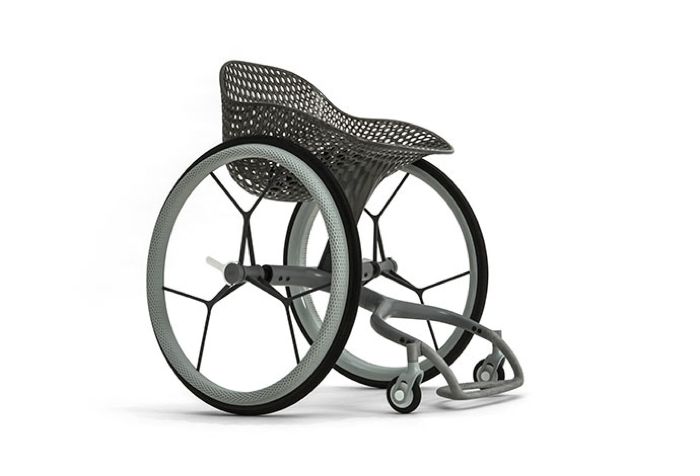SHARE
3D printing: engineering with social impact
When engineers think about 3D printing, the first thing that comes to their mind is probably the reduction of prototyping costs and lead times as well as custom products manufacturing.
However, in addition to improving processes and products, 3D printing can also serve to fill gaps in communities and provide a social benefit. This is the case of 3D printing projects where the goal is to improve living conditions and provide innovative solutions to specific challenges; challenges faced by people with limited resources.
Some examples of these projects include the manufacturing of affordable prostheses, where 3D printers are used to produce low-cost custom prostheses for people who might not otherwise have the needed resources.
Another example is the manufacturing of medical supplies and assistive products, which have a major impact on communities where access to medical supplies is limited. This includes devices such as face protectors, such as those used during the COVID pandemic, ventilation valves and medical diagnostic tools. Also wheelchairs and rehabilitation devices for people with disabilities and who face accessibility barriers.
3D printing projects in some communities can have a significant impact by providing innovative and affordable solutions to the challenges faced by their members.
Here you can check out some examples of social impact projects using 3D printing technology.
3D printed prostheses for the most vulnerable

Source: lionessesofafrica
Ukuhamba Prosthetics is a South African company specialized in manufacturing of custom prostheses using 3D printing technology. Its main objective is to provide accessible and high quality rehabilitation solutions for people with disabilities in South Africa and elsewhere.
In countries such as South Africa amputees cannot afford prostheses that cost between 20-100 thousand dollars; Sibongile Mongadi, founder of this startup, decided to launch a low-cost prosthetic business from recycled materials. He realized that one of the key factors was the cost of materials, so he decided to create prostheses from recycled plastic water bottles.
UkuHamba aims to reduce the low accessibility to prostheses in South Africa. Because of the high cost and personal income, only one of every three people have access to prostheses that can improve their lives. Failure to address this problem has other consequences, such as school dropout among persons with disabilities.
The company today focuses on the production of upper and lower limb prostheses, specifically designed to suit the individual needs and requirements of each patient. They use 3D scanning technology to obtain accurate models of affected limbs and then use 3D printers to manufacture custom prostheses.
Ukuhamba Prosthetics stands out for its focus on personalization and customer support. They work closely with each patient to understand their specific needs and design prostheses that perfectly fit their body and lifestyle. In addition, they offer follow-up and adjustment services to ensure optimal prosthetic comfort and functionality over time.
The company is also committed to improving access to rehabilitation and medical care for people with disabilities in underserved communities. They work in collaboration with local organizations and health professionals to bring their services to rural and urban areas where rehabilitation needs are most urgent.
3D Printing $100 hands against war

Source: 3dnatives
In the war in Ukraine many citizens have suffered injuries such as amputations and this has led to an urgent need for humanitarian aid. 3D printing has emerged as a hope to return to normal in their lives.
Gerwin Smit, a researcher at Delft University of Technology in the Netherlands, has developed affordable, high-quality handmade prostheses using a hybrid method of 3D printing and laser cutting.
Their system attempts to improve the reliability of many prostheses on the market that are 3D printed but easily broken. They build with laser cutting a mechanical mechanism inside the hand, to make it more robust.
Thanks to the generosity of the Indian social enterprise Vispala and the American technology company Cisco, they have donated 350 of these prostheses to Ukraine.
A sustainable and 3D printed wheelchair

Source: adaptado (Silla Go del estudio LayerLAB)
According to UNICEF and the WHO (World Health Organization), more than 1.3 billion people with disabilities in the world do not have access to wheelchairs and by 2050 more than 3 billion people will need mobility support.
Faced with this social challenge, the Spanish student Ana Isabel Alvarado found a way to make a wheelchair cheap, sustainable and easy to assemble for countries where this is a luxury.
According to the newspaper of León, the idea of this project was to train local people to produce assistive products for the autonomy and dignity of the elderly. The project was born from Ana´s master’s degree thesis on International Cooperation for Development at the University of León in Spain. The idea was to provide a solution to the living conditions of adults´ day-care centers in the city of Barrancabermeja, Colombia.
Ana´s chair is manufactured with low-cost materials such as PVC, although the idea is to replace it with more sustainable materials by incorporating 3D printers to the assembly process. The technical solution is part of the thesis of Industrial Engineering students from different universities, but Alvarado contributed with the use of sustainable materials and a kind of “Ikea” easy to use assembly manual.
3D printing is widely used in wheelchairs manufacturing, with projects such as LayerLAB where, based on biometric measurements, printers manufacture components such as the seat and footrest to perfectly fit each user’s body.
Another example is a 3D printed wheelchair using thermoplastic polyurethane. plastic and resin are used for the seat, for a proper cushion and a better center of gravity for the person. The Thermoplastic Polyurethane system acts as an active joint suspension system that improves comfort, according to the design studio Huber in charge of the «Go» chair.
Similarly this project is intended to provide a chair adapted to the end user, thanks to a mapping of the body of each person, together with its weight, physiognomy or characteristics of its disability.
